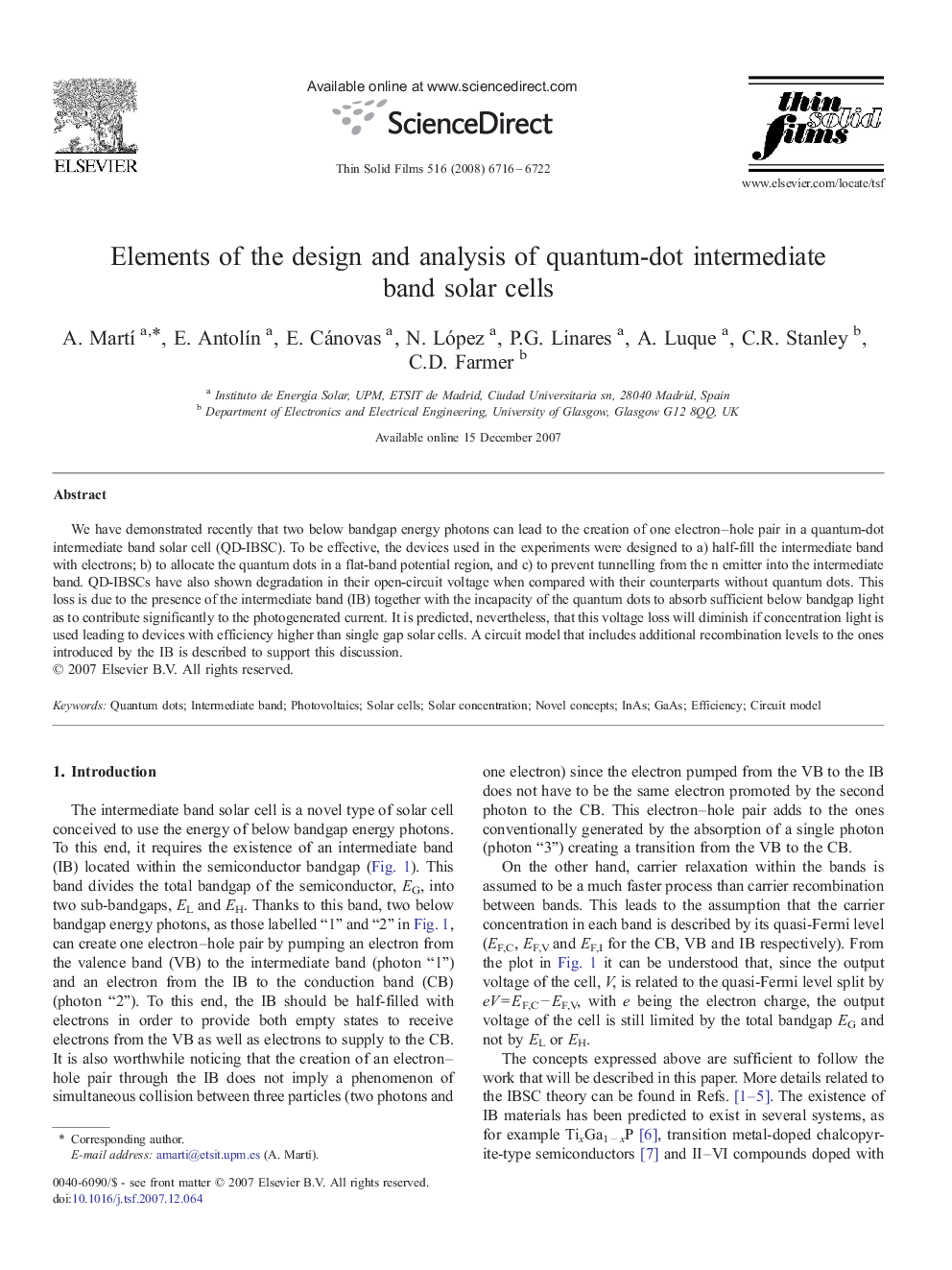| Article ID | Journal | Published Year | Pages | File Type |
|---|---|---|---|---|
| 1674404 | Thin Solid Films | 2008 | 7 Pages |
We have demonstrated recently that two below bandgap energy photons can lead to the creation of one electron–hole pair in a quantum-dot intermediate band solar cell (QD-IBSC). To be effective, the devices used in the experiments were designed to a) half-fill the intermediate band with electrons; b) to allocate the quantum dots in a flat-band potential region, and c) to prevent tunnelling from the n emitter into the intermediate band. QD-IBSCs have also shown degradation in their open-circuit voltage when compared with their counterparts without quantum dots. This loss is due to the presence of the intermediate band (IB) together with the incapacity of the quantum dots to absorb sufficient below bandgap light as to contribute significantly to the photogenerated current. It is predicted, nevertheless, that this voltage loss will diminish if concentration light is used leading to devices with efficiency higher than single gap solar cells. A circuit model that includes additional recombination levels to the ones introduced by the IB is described to support this discussion.
